Sarah L. Johnson's Blog, page 72
March 27, 2017
A storyteller at work: Brian Doyle's The Adventures of John Carson in Several Quarters of the World
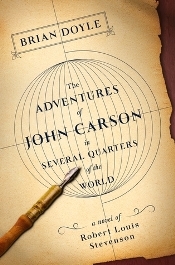 In 1880, after following his lady-love, Fanny Osbourne, halfway across the globe, Scottish writer Robert Louis Stevenson lives in San Francisco, waiting for her impending divorce from her unfaithful husband and hoping the money he earns from his scribblings will support a wife and family.
In 1880, after following his lady-love, Fanny Osbourne, halfway across the globe, Scottish writer Robert Louis Stevenson lives in San Francisco, waiting for her impending divorce from her unfaithful husband and hoping the money he earns from his scribblings will support a wife and family.John Carson, his landlady’s husband, is a longtime maritime man, and as they warm themselves by the fire and amble along the hilly streets, Carson recounts episodes from his adventurous life––a subject the historical Stevenson had planned to write about, but never did.
With abundant wit and mellifluous prose, expressed using generously long sentences, Doyle transports readers to diverse lands, including the Borneo jungle, Sydney, war-torn America, and a haunted Irish village. He also perceptively imagines the young Stevenson, a man soaking up new friendships and life lessons while sharpening his talents.
It’s a wondrous sort of paradox that a fiction nested inside another fiction can convey many poignant truths. Doyle’s irresistible novel, which practically begs to be read aloud, is a triumphant ode to the power of storytelling.
The Adventures of John Carson in Several Quarters of the World is published tomorrow by Thomas Dunne, an imprint of St. Martin's Press, in hardcover and ebook. I wrote this review for Booklist, and the final version appeared in the 2/1 issue.
Some other notes:
- This review assignment arrived last October, at which point I hadn't heard anything about the book. I don't always have the best luck with novels about explorers or adventurers, so it was a pleasant surprise. There's a lot of story and wisdom included in this comparatively short novel (it's 240pp long).
- Unfortunately, I don't find the cover art all that inspiring; maybe the paperback will be an improvement.
- This novel would be a good fit for admirers of Stevenson's own works, as well as anyone who enjoyed Nancy Horan's Under the Wide and Starry Sky, which covers his relationship with his wife, Fanny Osbourne.
Published on March 27, 2017 10:18
March 24, 2017
Book review, with notes: David Vann's Bright Air Black, a retelling of Medea
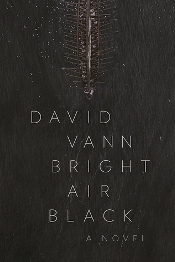 Any reimagining of the Greek myth of Medea, she who helped Jason acquire the Golden Fleece from her royal father and killed her children in revenge after Jason betrayed her, will never be a cozy read, yet Vann’s version is darker, edgier, and more discomfiting than most. It’s made up of prose incorporating both mesmerizing sentences and concentrated fragments.
Any reimagining of the Greek myth of Medea, she who helped Jason acquire the Golden Fleece from her royal father and killed her children in revenge after Jason betrayed her, will never be a cozy read, yet Vann’s version is darker, edgier, and more discomfiting than most. It’s made up of prose incorporating both mesmerizing sentences and concentrated fragments.A priestess of Hekate with no use for kings, Medea must depend on them and other men for her survival, to her frustration and fury. While ambitious, Jason still needs constant prodding to fulfill the destiny Medea creates for him by means of sorcery, cunning, and blood.
The Argo’s sea voyage from Colchis to Jason’s homeland of Iolcus feels overly drawn out, yet it allows for multiple opportunities to rework the traditional mythos in inventive ways—which often involve the characters indulging in their atavistic natures. The setting has an otherworldly feel at times, which heightens the sense of the tale’s ancientness.
Sensual and violent, often simultaneously, Vann’s novel evokes the primal force of women’s power.
Bright Air Black is published this month by Black Cat (the trade paperback imprint of the independent press Grove Atlantic; $16, 250pp). I reviewed it for Booklist, and the review was published in Booklist Online on February 3rd.
Some notes:
- It's hard to tell from the image above, but the cover shows a ship with a full crew of oarsmen plying their way through dark waves, as seen from above.
- If you haven't yet gotten the impression that this novel will be a challenging read due to the subject matter, let me repeat that. It is poetically written, though, so I found myself simultaneously admiring the prose and recoiling from the imagery in some scenes. I haven't read Vann's other novels but, from reviews, I understand that this is typical of his style.
- The novel's set in the 13th century BC, and the author has made a good effort to re-create the atmosphere of that long-ago time.
- Would I recommend it? If you're a literary fiction reader up for something daring and different (and you have a strong stomach), then by all means give it a try.
Published on March 24, 2017 06:00
March 20, 2017
New and upcoming historical novels for Small Press Month and Women's History Month
In the United States, March has been officially designated as National Women's History Month, with many bookstores, libraries, websites, and blogs offering celebrations of women's contributions to history. Also, up until 2013, when funding for the project unfortunately ran out, Small Press Month was observed nationally during March. This focus acknowledged the valuable contributions of small and independent presses to a thriving and diverse literary marketplace. With an ever-increasing number of mergers among the major players in the publishing industry, small presses play a more important role than ever in providing authors with greater opportunities and readers with more choices... always a good thing.
In honor of both observances, both official and not, here's a gallery of 10 new and forthcoming historical novels by female authors, and focusing (at least partly) on women's stories, which are (or will be) published by small presses. It was fun finding books that fit all three categories. No doubt there are more!
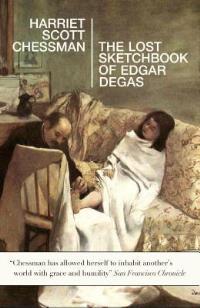
Chessman, best known for her art-inspired novel Lydia Cassatt Reading the Morning Paper, looks back on Degas' 1872 visit to New Orleans through the viewpoint of his Creole cousin Estelle (Tell), who has lost her sight. Outpost19, March 2017.
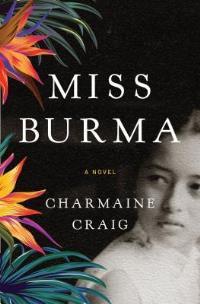
Craig's second novel intertwines the personal and political in a work about mid-20th-century Burmese history that focuses on her own family; her mother was a former Miss Burma, and there's plenty more to her story. Grove, May 2017.
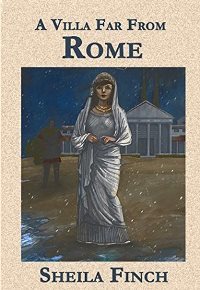
A young Roman woman, exiled to distant Britannia after bearing Emperor Nero's daughter, tries to adjust to her new situation in a land torn between the Roman rulers and rebellious Celtic tribespeople. Hadley Rille, February 2017.
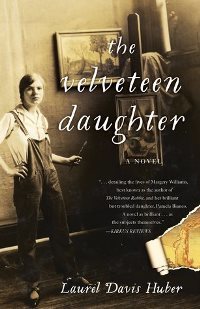
Troubled 20th-century artist Pamela Bianco was a child prodigy and the daughter of Margery Williams, most famous for her children's book The Velveteen Rabbit. The intertwined stories of these two complicated women are revealed in Huber's debut novel. She Writes Press, July 2017.
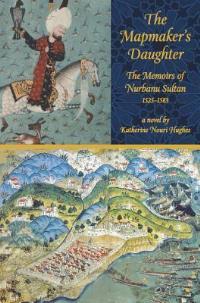
This novel in the form of a fictional memoir, by Irish-Iraqi author Hughes, takes as its subject the influential Nurbanu Sultan, Queen Mother of the Ottoman Empire in the 16th century. Delphinium, August 2017.
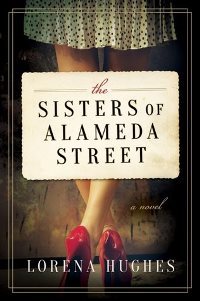
In 1960s Ecuador, a young woman undertakes a deception to discover the identity of her long-lost mother, who she knows is one of four sisters, all of whose names begin with the letter A. Skyhorse, July 2017.
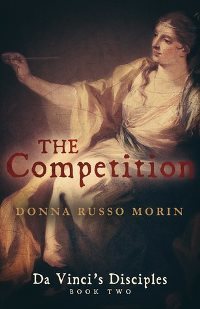
This second in the Da Vinci's Disciples series (after Portrait of a Conspiracy ; see my interview with the author) continues the story of six women of Renaissance Florence who dare to create art at a time when it was illegal for women to do so. Diversion, April 2017.
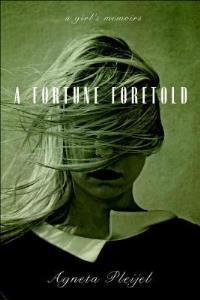
This autobiographical novel set in 1950s Sweden and the United States is a coming-of-age story about a young woman who navigates difficult emotional territory (her parents' shaky marriage) with the help of literature. Other Press, June 2017.
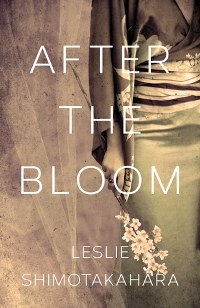
Shimotakahara's multi-period novel examines the lasting aftereffects of the Japanese internment in North America through her story about a daughter who learns about the painful past that her mother had refused to acknowledge. Dundurn, May 2017.
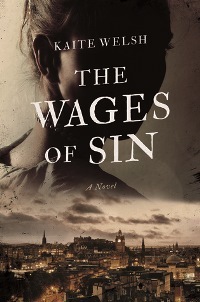
First in a new mystery series, The Wages of Sin features a female medical student in Victorian Edinburgh who turns sleuth after recognizing the female corpse on a dissection table. Pegasus, March 2017.
In honor of both observances, both official and not, here's a gallery of 10 new and forthcoming historical novels by female authors, and focusing (at least partly) on women's stories, which are (or will be) published by small presses. It was fun finding books that fit all three categories. No doubt there are more!

Chessman, best known for her art-inspired novel Lydia Cassatt Reading the Morning Paper, looks back on Degas' 1872 visit to New Orleans through the viewpoint of his Creole cousin Estelle (Tell), who has lost her sight. Outpost19, March 2017.

Craig's second novel intertwines the personal and political in a work about mid-20th-century Burmese history that focuses on her own family; her mother was a former Miss Burma, and there's plenty more to her story. Grove, May 2017.

A young Roman woman, exiled to distant Britannia after bearing Emperor Nero's daughter, tries to adjust to her new situation in a land torn between the Roman rulers and rebellious Celtic tribespeople. Hadley Rille, February 2017.

Troubled 20th-century artist Pamela Bianco was a child prodigy and the daughter of Margery Williams, most famous for her children's book The Velveteen Rabbit. The intertwined stories of these two complicated women are revealed in Huber's debut novel. She Writes Press, July 2017.

This novel in the form of a fictional memoir, by Irish-Iraqi author Hughes, takes as its subject the influential Nurbanu Sultan, Queen Mother of the Ottoman Empire in the 16th century. Delphinium, August 2017.

In 1960s Ecuador, a young woman undertakes a deception to discover the identity of her long-lost mother, who she knows is one of four sisters, all of whose names begin with the letter A. Skyhorse, July 2017.

This second in the Da Vinci's Disciples series (after Portrait of a Conspiracy ; see my interview with the author) continues the story of six women of Renaissance Florence who dare to create art at a time when it was illegal for women to do so. Diversion, April 2017.

This autobiographical novel set in 1950s Sweden and the United States is a coming-of-age story about a young woman who navigates difficult emotional territory (her parents' shaky marriage) with the help of literature. Other Press, June 2017.

Shimotakahara's multi-period novel examines the lasting aftereffects of the Japanese internment in North America through her story about a daughter who learns about the painful past that her mother had refused to acknowledge. Dundurn, May 2017.

First in a new mystery series, The Wages of Sin features a female medical student in Victorian Edinburgh who turns sleuth after recognizing the female corpse on a dissection table. Pegasus, March 2017.
Published on March 20, 2017 06:00
March 17, 2017
Mary Miley's Renting Silence, a mystery of old Hollywood and vaudeville
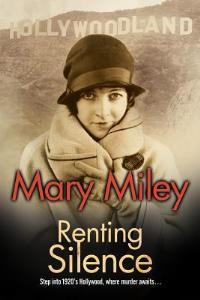 Miley’s third Roaring '20s mystery delivers more zippy entertainment that taps into the spirit of the time when Hollywood’s silent film stars had audiences swooning and vaudeville acts traversed the country via rail.
Miley’s third Roaring '20s mystery delivers more zippy entertainment that taps into the spirit of the time when Hollywood’s silent film stars had audiences swooning and vaudeville acts traversed the country via rail.Fresh from her previous investigation, Jessie Beckett, assistant script girl at Pickford-Fairbanks Studios, gets asked to solve another Hollywood murder. It seems an open-and-shut case: in her dying moments, Lila Walker had pointed twice to her friend, actress Ruby Glynn, who was found clutching a bloody knife.
However, Ruby insists on her innocence. A studio cameraman who sat on the jury that condemned her to death regrets his vote. Observing his tormented conscience, Mary Pickford asks Jessie to look further into Ruby’s situation, because the police won’t. Jessie can’t refuse her longtime idol, so she gathers her street-smarts and ingenuity and delves into Lila’s background.
What she uncovers sends her back to her old haunts, on the vaudeville circuit across the Midwest, where she meets a variety of talented performers, shadows from her own family’s past, and hateful prejudice in the form of the KKK. Jessie also worries that her lover, David Carr, has returned to his old bootlegging habits.
Renting Silence makes good use of historical characters, from Miss Pickford and her debonair husband to the young Leslie Hope, a former amateur boxer turned song-and-dance man who debates changing his name to something more American-sounding, like Bill or Bob. Jessie’s travels bring to life the fascinating, vanished world of vaudeville, and it’s a lot of fun, but the investigation driving Jessie is quite serious and dangerous.
The title refers to blackmail; as one person tells Jessie, “But you don’t buy silence. You only rent it. And the rent kept going up.” The novel makes plain how much people stand to lose if they don’t fit society’s norms.
Renting Silence was published in December by Severn House in the US and UK. This review first appeared in February's Historical Novels Review.
I really enjoy this series and previously reviewed books 1 and 2, The Impersonator and Silent Murders , which explain more of Jessie's background.
Published on March 17, 2017 07:02
March 10, 2017
Downtonesque, but with a difference: Kate Williams' The Storms of War
During the long, golden summer of 1914, members of a wealthy British family spend their days at leisure on their expansive Hampshire estate. While the eldest daughter, beautiful Emmeline, dreams of her wedding to Sir Hugh Bradshaw, her mother, Verena, directs the servants in planning their annual summer party, to which the village children will be invited. Son Michael, home from Cambridge, has brought his American friend Jonathan to stay for a short visit. The youngest, fifteen-year-old Celia – her father’s favorite – spends time with her beloved horse and with Tom, the family’s groom, a secret friendship her friends and parents would find inappropriate.
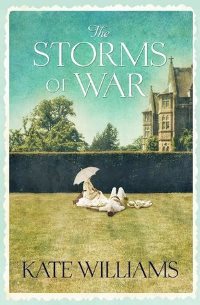 Before long, as readers know, war will be declared, the social order will crumble, and life at Stoneythorpe Hall will be forever changed.
Before long, as readers know, war will be declared, the social order will crumble, and life at Stoneythorpe Hall will be forever changed.
So far, so familiar. The basic scenario has played out in numerous historical novels and at least one iconic TV show. However, this outline omits a few important facts that helps Kate Williams’ The Storms of War carve out an original niche in this well-worn turf. The de Witt family patriarch is a tradesman, and he was born in Germany. The middle-aged Sir Hugh, who takes snobbery to rude extremes, looks past his fiancée’s background because he needs her family’s money, which comes from canned meat production.
Furthermore, the de Witts had purchased Stoneythorpe from an elderly aristocratic lady five years earlier, and their new neighbors resent them. To be more specific, the townspeople hate them, a situation that becomes cruelly obvious after war breaks out and anything (and anyone) German is shunned. Despite their loyalty to England, their connections to Germany affects each of them in ways that are sometimes predictable, sometimes the opposite.
The Storms of War, first in a proposed trilogy about the de Witt family, spans the five years of WWI and narrows its focus to the viewpoints of Celia and Michael, mostly the former. We know from the prologue that Michael will find himself at the Somme, forced to lead his men “over the top” despite shell-shock and crippling anxiety. What he endures overseas is as harrowing as expected but isn't without elements of surprise.
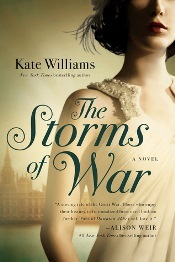 Even more penetrating, though, are Celia’s experiences driving ambulances in France (and yes, she’s underage, so how she achieves this is a story in itself). Basing Celia’s wartime service on primary source accounts, Williams makes readers feel Celia's utter terror as she drives the unfamiliar vehicle in the pitch dark, exhausted, with wounded soldiers wailing at every bump in the road. How she accomplishes Celia’s transformation from naïve adolescent unable to conceive of a servant-free life to disillusioned, war-weary veteran over the course of 500 pages is masterful and convincing.
Even more penetrating, though, are Celia’s experiences driving ambulances in France (and yes, she’s underage, so how she achieves this is a story in itself). Basing Celia’s wartime service on primary source accounts, Williams makes readers feel Celia's utter terror as she drives the unfamiliar vehicle in the pitch dark, exhausted, with wounded soldiers wailing at every bump in the road. How she accomplishes Celia’s transformation from naïve adolescent unable to conceive of a servant-free life to disillusioned, war-weary veteran over the course of 500 pages is masterful and convincing.
As several characters relate on occasion, the British royals are also of German origin, but comparisons to their country’s highest-ranking citizens don’t benefit the de Witts in the least. While these reminders provide additional context for the times the characters are living through, the royal genealogy gets a bit garbled (the Kaiser was Queen Victoria’s grandson, not her nephew). It also feels odd for the de Witt children to refer to their parents by their first names at times. Although their perspectives aren’t shown firsthand, the novel shows how Rudolf, Verena, and Emmeline are changed by the war as well.
This is a hefty, epic read, but the confident storytelling makes it easy to get carried into the de Witts’ world. For those who enjoy it and want more, the sequel, The Edge of the Fall, is already out.
In the UK, The Storms of War is published by Orion. In the US, the publisher is Pegasus, and HarperCollins published it in the UK.
 Before long, as readers know, war will be declared, the social order will crumble, and life at Stoneythorpe Hall will be forever changed.
Before long, as readers know, war will be declared, the social order will crumble, and life at Stoneythorpe Hall will be forever changed. So far, so familiar. The basic scenario has played out in numerous historical novels and at least one iconic TV show. However, this outline omits a few important facts that helps Kate Williams’ The Storms of War carve out an original niche in this well-worn turf. The de Witt family patriarch is a tradesman, and he was born in Germany. The middle-aged Sir Hugh, who takes snobbery to rude extremes, looks past his fiancée’s background because he needs her family’s money, which comes from canned meat production.
Furthermore, the de Witts had purchased Stoneythorpe from an elderly aristocratic lady five years earlier, and their new neighbors resent them. To be more specific, the townspeople hate them, a situation that becomes cruelly obvious after war breaks out and anything (and anyone) German is shunned. Despite their loyalty to England, their connections to Germany affects each of them in ways that are sometimes predictable, sometimes the opposite.
The Storms of War, first in a proposed trilogy about the de Witt family, spans the five years of WWI and narrows its focus to the viewpoints of Celia and Michael, mostly the former. We know from the prologue that Michael will find himself at the Somme, forced to lead his men “over the top” despite shell-shock and crippling anxiety. What he endures overseas is as harrowing as expected but isn't without elements of surprise.
 Even more penetrating, though, are Celia’s experiences driving ambulances in France (and yes, she’s underage, so how she achieves this is a story in itself). Basing Celia’s wartime service on primary source accounts, Williams makes readers feel Celia's utter terror as she drives the unfamiliar vehicle in the pitch dark, exhausted, with wounded soldiers wailing at every bump in the road. How she accomplishes Celia’s transformation from naïve adolescent unable to conceive of a servant-free life to disillusioned, war-weary veteran over the course of 500 pages is masterful and convincing.
Even more penetrating, though, are Celia’s experiences driving ambulances in France (and yes, she’s underage, so how she achieves this is a story in itself). Basing Celia’s wartime service on primary source accounts, Williams makes readers feel Celia's utter terror as she drives the unfamiliar vehicle in the pitch dark, exhausted, with wounded soldiers wailing at every bump in the road. How she accomplishes Celia’s transformation from naïve adolescent unable to conceive of a servant-free life to disillusioned, war-weary veteran over the course of 500 pages is masterful and convincing. As several characters relate on occasion, the British royals are also of German origin, but comparisons to their country’s highest-ranking citizens don’t benefit the de Witts in the least. While these reminders provide additional context for the times the characters are living through, the royal genealogy gets a bit garbled (the Kaiser was Queen Victoria’s grandson, not her nephew). It also feels odd for the de Witt children to refer to their parents by their first names at times. Although their perspectives aren’t shown firsthand, the novel shows how Rudolf, Verena, and Emmeline are changed by the war as well.
This is a hefty, epic read, but the confident storytelling makes it easy to get carried into the de Witts’ world. For those who enjoy it and want more, the sequel, The Edge of the Fall, is already out.
In the UK, The Storms of War is published by Orion. In the US, the publisher is Pegasus, and HarperCollins published it in the UK.
Published on March 10, 2017 08:00
March 7, 2017
Book review, with notes: Kate Alcott's The Hollywood Daughter
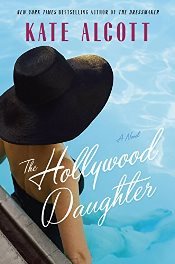 Alcott (
A Touch of Stardust
, 2015) returns to mid-twentieth-century Los Angeles with her novel about a young woman’s emotional and cultural awakening.
Alcott (
A Touch of Stardust
, 2015) returns to mid-twentieth-century Los Angeles with her novel about a young woman’s emotional and cultural awakening.Jessica “Jesse” Malloy, who narrates in a vibrant voice, feels awkward growing up as the daughter of a fun-loving Selznick Studio publicist and a reserved Catholic woman who resists Hollywood’s sinful influences. Jesse has always hero-worshipped Ingrid Bergman, and when the beautiful Swedish actress stars in The Bells of St. Mary’s, which is filmed at Jesse’s convent school, Catholics’ admiration for her seems boundless. However, when Bergman’s affair with Italian director Roberto Rossellini is discovered, the situation horrifies Hollywood’s morality police and shatters Jesse’s illusions.
Alcott uses a fast-paced, efficient writing style and creates a believable portrait of a teenager navigating high school, potential romances, and her complicated world during the McCarthy years. The portions set in 1959, as Jesse returns home after a long absence, provide emotional closure. Jesse’s parents, teachers, and Bergman herself are all sketched with subtlety. Another honest look at the real stories behind Hollywood’s glamorous veneer.
The Hollywood Daughter is published today in hardcover and ebook by Doubleday. This review was submitted for publication in Booklist's January 1st issue.
Some other notes:
This novel will work well as a YA crossover title. In fact, I can't recall reading another adult-level historical novel that placed so much emphasis on its heroine's school experiences, which include Jesse's relationships with her teachers (who fortunately aren't stereotyped) and her participation on a debate team. I think it could have been categorized as YA if not for the sections at the beginning and end. Sarah Hunter at Booklist recommended the book for YA readers and appended a note to that effect at the end of the review. If anyone else has read it, I'll be interested to hear your thoughts.
For a perspective on how the novel's themes relate to contemporary times, see Kate Manning's review in the Washington Post , which was published yesterday.
Published on March 07, 2017 11:00
March 3, 2017
A devilishly Bohemian thriller: Dana Chamblee Carpenter's The Devil's Bible
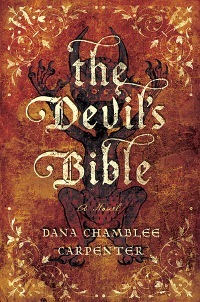 The Devil’s Bible is a real book. Known more formally as the Codex Gigas (giant codex), it measures 36” tall and 20” wide. Believed to have been produced at the Podlažice Monastery in what’s now the Czech Republic, this immense medieval manuscript received its nickname because of the eerie legend behind its creation, and because it contains a full-page color drawing of the devil, in all his maleficent glory.
The Devil’s Bible is a real book. Known more formally as the Codex Gigas (giant codex), it measures 36” tall and 20” wide. Believed to have been produced at the Podlažice Monastery in what’s now the Czech Republic, this immense medieval manuscript received its nickname because of the eerie legend behind its creation, and because it contains a full-page color drawing of the devil, in all his maleficent glory. In her second historical fantasy novel, Dana Chamblee Carpenter uses the actual history and folklore surrounding this strange text to imagine the circumstances that led to its writing. It needs to be said that The Devil’s Bible is a sequel to Bohemian Gospel , and readers starting with book two will miss many nuances and won’t feel the full impact of events as they unfold. The first book introduced the character of Mouse, an orphaned young woman in 13th-century Bohemia whose unusual gifts and ability to harness supernatural powers caused people to fear her – for good reason, as it turned out.
Bohemian Gospel was an impressive debut, but I like this sequel even more; it’s more smoothly paced, and while the first book felt almost unremittingly dark, this book offers many moments of light and hope that counterbalance the bleakness.
The story is split between two time frames. In the year 1278, Mouse, who refuses to cause more unintentional harm to others than she already has, has herself walled into a cell at Podlažice Monastery and inscribes the book that will become the Codex Gigas. Unfortunately, the source of her occult talents, her father, finds her there and insists on making his own contributions to the book.
Then, in the present day, we find Mouse employed as a Nashville university professor calling herself Emma Nicholas. Fearful of becoming close to anyone over the last 700 years, she holds tight control over her gifts and hopes her father won’t find her again. That is, until a former student claiming expertise in the Devil’s Bible catches up with her at a conference. The power she unleashes in her defense naturally attracts her immortal father’s notice.
With its combination of speculative religious history and high-stakes thrills, The Devil’s Bible may feel thematically similar to The Da Vinci Code, but the writing is more sophisticated, and it takes a more original spin. For Mouse, who struggles to come to terms with her nature, the Church and the devil are both strong adversaries, for different reasons. Her twisty relationship with her father kept me guessing (what does he want from her?). I also appreciated the scenes juxtaposing past and present and the continued focus on less trodden historical ground.
While at the Vatican, Mouse encounters a likely enemy and finds a surprising ally who accompanies her on her mission. In their quest to evade her father and find clues from the book she inscribed centuries ago, she revisits many sites from her past: the crypts and monuments of medieval Prague, the crumbling ruins of Podlažice, and several others. Also, although Mouse is fictional, her depiction as the original scribe of the Codex Gigas fits neatly with its legend.
The Devil's Bible will be published in hardcover by Pegasus next Tuesday. Thanks to the publisher for the review copy.
Published on March 03, 2017 10:00
February 28, 2017
Lucy Foley's The Invitation, set along the Italian Riviera in the '50s
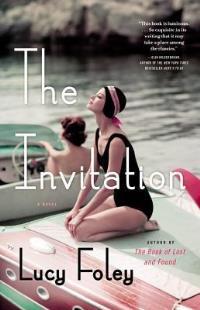 Cruising along the Italian Riviera in the 1950s sounds like a luxurious experience, and this feeling is conveyed to readers of Lucy Foley’s second novel. For the lovers at its center, the journey also entails revisiting their hidden pasts. Journalist Hal Jacobs first meets the glamorous Stella at an Italian contessa’s party in Rome in 1951. Escaping the crowds in a rooftop garden, these lonely strangers form a connection and later spend a single, memorable night together.
Cruising along the Italian Riviera in the 1950s sounds like a luxurious experience, and this feeling is conveyed to readers of Lucy Foley’s second novel. For the lovers at its center, the journey also entails revisiting their hidden pasts. Journalist Hal Jacobs first meets the glamorous Stella at an Italian contessa’s party in Rome in 1951. Escaping the crowds in a rooftop garden, these lonely strangers form a connection and later spend a single, memorable night together. They encounter each other again two years later. Both are invited by the Contessa along on a publicity tour via yacht from Liguria to Cannes to promote a film based on her sea-captain ancestor’s diary. Hal is hired to document the trip for an Italian magazine, while Stella is married to the film’s major funder. Hal is dismayed not only by this unpleasant revelation but also because Stella appears diminished in her wealthy husband’s presence. As she and Hal are drawn together amid the high-profile social circle aboard ship, he yearns for her true personality to emerge—and to recapture their lost intimacy.
Stella’s traumatic history unfolds in steady flashbacks to the Spanish Civil War, while a painful episode in Hal’s past is revealed much later, with dramatic impact. Hal’s reading of the diary, which he recasts in narrative form, strangely seems to parallel what he sees. Among the stylish secondary characters who accompany and observe the couple—many have hidden pasts of their own—the elegant Contessa stands out for her understanding wisdom.
Each scene in this lyrically written novel is laden with emotion, and although the story glides along leisurely, the details are worth savoring. The Invitation is a perfect read for those who love traveling via fiction. Foley evokes the character of each city and village along the sun-drenched voyage, from the contrasting decadence and industrial grime of Genoa to the verdant cliffs of Cervo and beyond.
The Invitation was published by Little, Brown in the US last summer, with the gorgeous cover above. This review first appeared in February's Historical Novels Review.
Published on February 28, 2017 17:00
February 23, 2017
The 2017 Walter Scott Prize longlist, and the WSP Academy's recommended titles
The 13-book longlist for the 2017 Walter Scott Prize for Historical Fiction was announced yesterday, and I've listed the judges' selections below.
Entries are limited to books published in the UK, Ireland, and the Commonwealth. The original publisher was provided, and I've added notes with details on their US publisher, if it exists, as well as the historical setting. Plus I posted some of my favorite covers. The winner will be announced at the Borders Book Festival in Scotland in June.
Have you read any, and if so, what did you think? I've only read one so far.
The longlist:
Jo Baker, A Country Road, A Tree (Doubleday) - also Knopf, 2016. WWII-era Europe.
Julian Barnes, The Noise of Time (Jonathan Cape) - also Knopf, 2016. The early 20th-c Soviet Union.
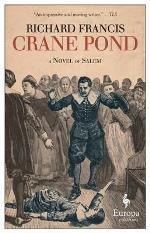 Sebastian Barry, Days Without End (Faber) - also Viking, 2017. The US Civil War and American West.
Sebastian Barry, Days Without End (Faber) - also Viking, 2017. The US Civil War and American West.
Richard Francis, Crane Pond (Europa) - same US publisher. The Salem witch trials.
Linda Grant, The Dark Circle (Virago). Post-WWII London.
Charlotte Hobson, The Vanishing Futurist (Faber). Russia under the Bolsheviks.
Hannah Kent, The Good People (Picador Australia) - also forthcoming from Little, Brown, Sept. 2017. 19th-century Ireland.
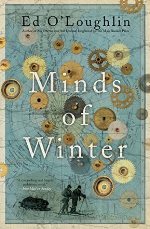 Ed O’Loughlin, Minds of Winter (riverrun) - also Quercus, March 2017. Victorian-era Arctic exploration.
Ed O’Loughlin, Minds of Winter (riverrun) - also Quercus, March 2017. Victorian-era Arctic exploration.
Sarah Perry, The Essex Serpent (Profile) - also forthcoming from Custom House/HarperCollins, June 2017. Late Victorian-era Essex, England.
Dominic Smith, The Last Painting of Sara de Vos (Allen & Unwin Australia) - also FSG, 2016. Three centuries: 1630s Amsterdam, 1950s NYC, and Sydney in 2000.
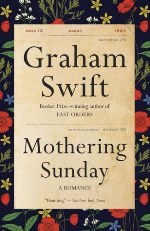 Francis Spufford, Golden Hill (Faber) - forthcoming from Scribner, June 2017. 18th-century New York.
Francis Spufford, Golden Hill (Faber) - forthcoming from Scribner, June 2017. 18th-century New York.
Graham Swift, Mothering Sunday (Scribner) - also Knopf, 2016. 20th-century England.
Rose Tremain, The Gustav Sonata (Chatto & Windus) - also FSG, 2017. 20th-century Switzerland. This is the only one of the thirteen that I've read and reviewed.
~
In addition, the newly formed Walter Scott Prize Academy issued an additional list of recommended titles, and both this list and the longlist have international representation.
The WSP Academy's Recommended List:
Carol Birch, Orphans of the Carnival (Canongate) - also Doubleday, 2016. Carnival life in early 20th-century Europe and America.
 Emily Bitto, The Strays (Legend Press) - also Twelve, 2017. Depression-era Australia.
Emily Bitto, The Strays (Legend Press) - also Twelve, 2017. Depression-era Australia.
Jessie Burton, The Muse (Picador) - also Ecco, 2016. The Spanish Civil War and 1960s London.
Tracy Chevalier, At the Edge of the Orchard (Borough Press) - also Viking, 2016. 19th-century Ohio and California.
Emma Donoghue, The Wonder (Picador) - also Little, Brown, 2016. 19th-century rural Ireland.
Susan Fletcher, Let Me Tell you About a Man I Knew (Virago). Late 19th-century France.
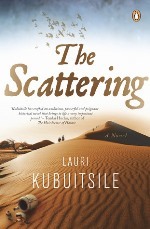 Anna Hope, The Ballroom (Doubleday) - also Doubleday US, 2016. England in 1911.
Anna Hope, The Ballroom (Doubleday) - also Doubleday US, 2016. England in 1911.
Lauri Kubuitsile, The Scattering (Penguin South Africa). Early 20th-century South Africa; has US distribution.
Lynne Kutsukake, The Translation of Love (Knopf Canada) - also Viking, 2016. WWII-era Canada and Japan.
Eowyn Ivey, To the Bright Edge of the World (Tinder Press) - also Little, Brown, 2016. Alaska Territory in 1885.
Ian McGuire, The North Water (Scribner). Also Henry Holt, 2016. The 19th-century Arctic.
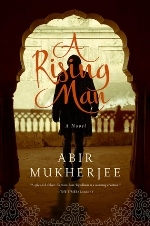 Abir Mukherjee, A Rising Man (Harvill Secker) - also Soho, 2017. Calcutta in 1919.
Abir Mukherjee, A Rising Man (Harvill Secker) - also Soho, 2017. Calcutta in 1919.
S.J. Parris, Conspiracy (HarperCollins). Paris in 1585.
Steven Price, By Gaslight (Oneworld) - also FSG, 2017. Victorian London.
Ralph Spurrier, A Coin for the Hangman (Hookline Books). 1950s Britain.
Andrew Taylor, The Ashes of London (HarperCollins). Also HarperCollins US, March 2017. The Great Fire, 17th-century London.
 Natasha Walter, A Quiet Life (Borough Press). Mid-20th century England.
Natasha Walter, A Quiet Life (Borough Press). Mid-20th century England.
A.N. Wilson, Resolution (Atlantic). 18th-century world exploration.
Alissa York, The Naturalist (Random House Canada). 19th-century America and Brazil.
Louisa Young, Devotion (Borough Press). Pre-WWI England.
I like seeing award longlists even more than the final results -- more books to choose from! And the "recommended" list provided by the Academy brings even more historical novels to readers' attention. I've only read four, the ones with the reviews linked above, and enjoyed them.
Entries are limited to books published in the UK, Ireland, and the Commonwealth. The original publisher was provided, and I've added notes with details on their US publisher, if it exists, as well as the historical setting. Plus I posted some of my favorite covers. The winner will be announced at the Borders Book Festival in Scotland in June.
Have you read any, and if so, what did you think? I've only read one so far.
The longlist:
Jo Baker, A Country Road, A Tree (Doubleday) - also Knopf, 2016. WWII-era Europe.
Julian Barnes, The Noise of Time (Jonathan Cape) - also Knopf, 2016. The early 20th-c Soviet Union.
 Sebastian Barry, Days Without End (Faber) - also Viking, 2017. The US Civil War and American West.
Sebastian Barry, Days Without End (Faber) - also Viking, 2017. The US Civil War and American West.Richard Francis, Crane Pond (Europa) - same US publisher. The Salem witch trials.
Linda Grant, The Dark Circle (Virago). Post-WWII London.
Charlotte Hobson, The Vanishing Futurist (Faber). Russia under the Bolsheviks.
Hannah Kent, The Good People (Picador Australia) - also forthcoming from Little, Brown, Sept. 2017. 19th-century Ireland.
 Ed O’Loughlin, Minds of Winter (riverrun) - also Quercus, March 2017. Victorian-era Arctic exploration.
Ed O’Loughlin, Minds of Winter (riverrun) - also Quercus, March 2017. Victorian-era Arctic exploration.Sarah Perry, The Essex Serpent (Profile) - also forthcoming from Custom House/HarperCollins, June 2017. Late Victorian-era Essex, England.
Dominic Smith, The Last Painting of Sara de Vos (Allen & Unwin Australia) - also FSG, 2016. Three centuries: 1630s Amsterdam, 1950s NYC, and Sydney in 2000.
 Francis Spufford, Golden Hill (Faber) - forthcoming from Scribner, June 2017. 18th-century New York.
Francis Spufford, Golden Hill (Faber) - forthcoming from Scribner, June 2017. 18th-century New York.Graham Swift, Mothering Sunday (Scribner) - also Knopf, 2016. 20th-century England.
Rose Tremain, The Gustav Sonata (Chatto & Windus) - also FSG, 2017. 20th-century Switzerland. This is the only one of the thirteen that I've read and reviewed.
~
In addition, the newly formed Walter Scott Prize Academy issued an additional list of recommended titles, and both this list and the longlist have international representation.
The WSP Academy's Recommended List:
Carol Birch, Orphans of the Carnival (Canongate) - also Doubleday, 2016. Carnival life in early 20th-century Europe and America.
 Emily Bitto, The Strays (Legend Press) - also Twelve, 2017. Depression-era Australia.
Emily Bitto, The Strays (Legend Press) - also Twelve, 2017. Depression-era Australia.Jessie Burton, The Muse (Picador) - also Ecco, 2016. The Spanish Civil War and 1960s London.
Tracy Chevalier, At the Edge of the Orchard (Borough Press) - also Viking, 2016. 19th-century Ohio and California.
Emma Donoghue, The Wonder (Picador) - also Little, Brown, 2016. 19th-century rural Ireland.
Susan Fletcher, Let Me Tell you About a Man I Knew (Virago). Late 19th-century France.
 Anna Hope, The Ballroom (Doubleday) - also Doubleday US, 2016. England in 1911.
Anna Hope, The Ballroom (Doubleday) - also Doubleday US, 2016. England in 1911.Lauri Kubuitsile, The Scattering (Penguin South Africa). Early 20th-century South Africa; has US distribution.
Lynne Kutsukake, The Translation of Love (Knopf Canada) - also Viking, 2016. WWII-era Canada and Japan.
Eowyn Ivey, To the Bright Edge of the World (Tinder Press) - also Little, Brown, 2016. Alaska Territory in 1885.
Ian McGuire, The North Water (Scribner). Also Henry Holt, 2016. The 19th-century Arctic.
 Abir Mukherjee, A Rising Man (Harvill Secker) - also Soho, 2017. Calcutta in 1919.
Abir Mukherjee, A Rising Man (Harvill Secker) - also Soho, 2017. Calcutta in 1919.S.J. Parris, Conspiracy (HarperCollins). Paris in 1585.
Steven Price, By Gaslight (Oneworld) - also FSG, 2017. Victorian London.
Ralph Spurrier, A Coin for the Hangman (Hookline Books). 1950s Britain.
Andrew Taylor, The Ashes of London (HarperCollins). Also HarperCollins US, March 2017. The Great Fire, 17th-century London.
 Natasha Walter, A Quiet Life (Borough Press). Mid-20th century England.
Natasha Walter, A Quiet Life (Borough Press). Mid-20th century England.A.N. Wilson, Resolution (Atlantic). 18th-century world exploration.
Alissa York, The Naturalist (Random House Canada). 19th-century America and Brazil.
Louisa Young, Devotion (Borough Press). Pre-WWI England.
I like seeing award longlists even more than the final results -- more books to choose from! And the "recommended" list provided by the Academy brings even more historical novels to readers' attention. I've only read four, the ones with the reviews linked above, and enjoyed them.
Published on February 23, 2017 11:00
February 20, 2017
Book review: The Confessions of Young Nero, by Margaret George
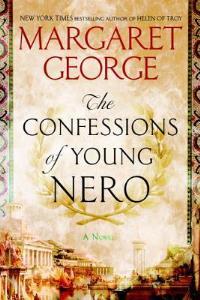 Does he fiddle while Rome burns? No, although he loves performing music. What about the extravagances, dissipation, and political murders? Let’s just say there are extenuating circumstances. Once again demonstrating mastery of the epic fictional autobiography, George chronicles the rise of Lucius Domitius Ahenobarbus, Emperor Caligula’s nephew, from sensitive boy to imperial heir to, finally, near-omnipotent ruler as Emperor Nero.
Does he fiddle while Rome burns? No, although he loves performing music. What about the extravagances, dissipation, and political murders? Let’s just say there are extenuating circumstances. Once again demonstrating mastery of the epic fictional autobiography, George chronicles the rise of Lucius Domitius Ahenobarbus, Emperor Caligula’s nephew, from sensitive boy to imperial heir to, finally, near-omnipotent ruler as Emperor Nero.It’s a coming-of-age story like no other, and George’s Nero details the rapid shifts in circumstance that transform his character – not without many twinges of guilt along the way, He fears becoming like his mother, the ambitious, amoral Agrippina, but must play her game to survive.
An athlete and admirer of Greek culture, Nero is a consummate showman, and his entertaining narrative exemplifies this. With conviction and flair, George looks past two millennia of bad press about Nero to reveal an intelligent man of justice and religious tolerance who takes refuge in artistic expression. This is the first of two novels charting his dangerous, outrageous life in first-century Rome; the second is eagerly awaited.
I read The Confessions of Young Nero last October, and the review above was submitted to Booklist for publication in February 1st issue. The novel, Margaret George's seventh historical epic, will be published by Berkley in hardcover ($28, 528pp) and ebook ($12.99) on March 7th. The UK publisher, Macmillan, will publish on March 9th.
Her six previous historical novels are as follows. Which is/are your favorite(s)?
The Autobiography of Henry VIII, 1986
Mary Queen of Scotland and the Isles, 1992
The Memoirs of Cleopatra, 1997
Mary, Called Magdalene, 2002
Helen of Troy, 2006
Elizabeth I: A Novel, 2012
For more information, see the author's website.
Published on February 20, 2017 10:00



